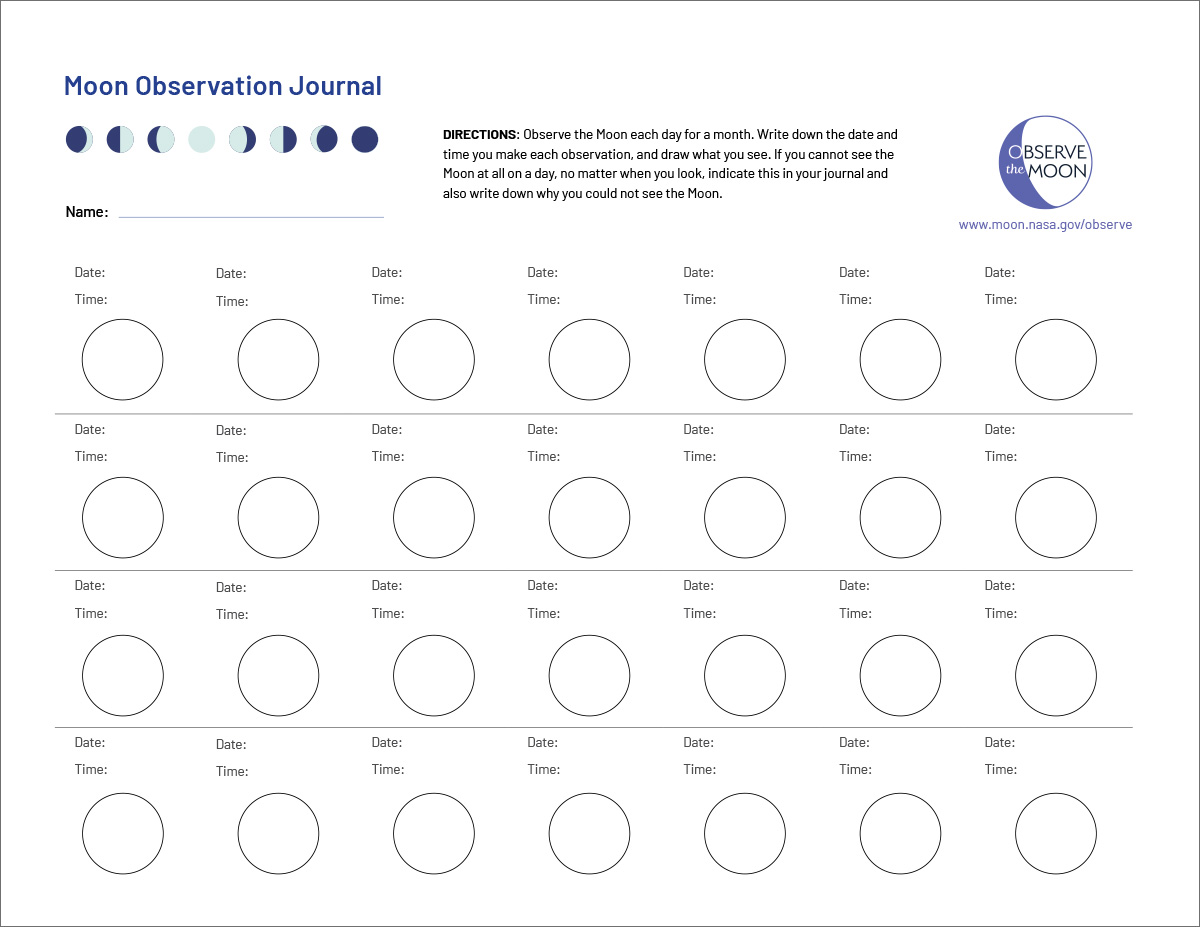Moon Observation Journal
May 29, 2024
| Language |
|
|---|
Spend the next month getting to know the Moon.
Observe the Moon each day for a month. Write down the date and time you make each observation, and draw what you see. If you cannot see the Moon at all on a day, no matter when you look, indicate this in your journal and also write down why you could not see the Moon.
Questions:
- Did the Moon look the same each day? If not, describe how it changed throughout the month.
- Did you see the Moon at the same time each day? Was there a pattern to the time when you were able to observe it? If so, describe the pattern.
- Did anything prevent you from being able to see the Moon this month? Could you still figure out what the Moon would have looked like if you could have seen it? If so, how?
- A solar eclipse is a rare opportunity to observe a new moon.
Look up information on the phases of the Moon and indicate in your Moon Observation Journal where you think the Moon most closely matched each of the following phases:
Waxing Crescent, First Quarter, Waxing Gibbous, Full Moon, Waning Gibbous, Third Quarter, and Waning Crescent, as well as New Moon. - A solar eclipse occurs when the Sun, Moon, and Earth line up, with the Moon in between the Sun and Earth. This only happens during a new moon phase. A lunar eclipse occurs when the Sun, Earth, and Moon line up, with the Earth in between the Sun and Moon. During what phase of the Moon could you see a lunar eclipse?
- What questions do you have about the Moon or eclipses? See if you can find answers and then share what you learn with your friends and family.
Some places you can find information about the Moon and eclipses are:
- NASA’s Moon Site: science.nasa.gov/moon
- Lunar eclipses: science.nasa.gov/moon/eclipses
- Solar eclipses: science.nasa.gov/eclipses

























